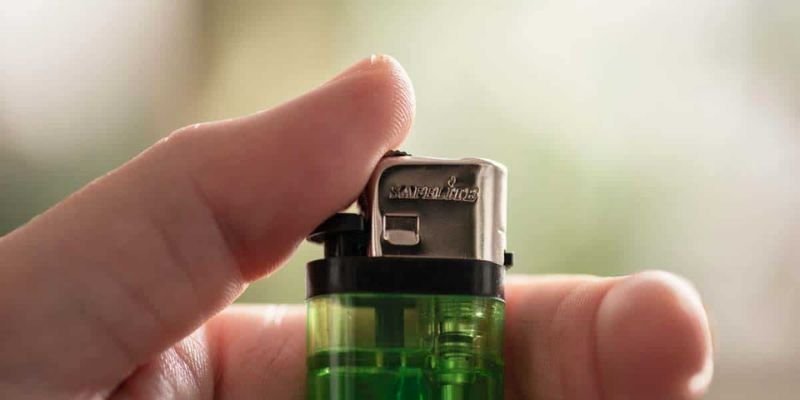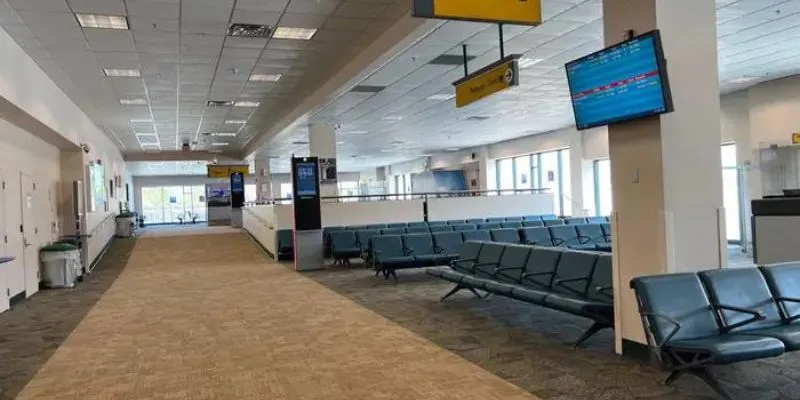When it comes to air travel, there are always questions about what you can and can’t bring on board. One common concern is, “Can you take a lighter on a plane?” The answer is yes, but there are specific rules and restrictions that passengers need to follow. Whether you’re traveling for business or leisure, knowing the lighter regulations can help you avoid any issues at the airport. While most airlines allow lighters, they usually need to be carried on your person, not in your luggage. There are also restrictions based on the type of lighter, such as whether it contains fuel or uses an electric arc. In this article, we’ll explore what you need to know about taking a lighter on a plane and how to stay within the safety guidelines.
Can You Bring a Lighter on an Airplane?
Can you take a lighter on a plane? Yes, you can bring a lighter on an airplane, but there are important rules to follow. The Transportation Security Administration (TSA) has set guidelines to keep everyone safe. Here’s what you need to know before you travel.

Types of Lighters You Can Take on Plane
The TSA has slightly different rules to manage safety while allowing passengers to bring a lighter with them. These regulations are designed to ensure safety while allowing passengers to carry a lighter when needed. Generally, these rules allow for one small cigarette lighter to be brought on a flight, but there are some important details and exceptions to keep in mind.
Here’s a breakdown of the different types of lighters and how they are handled:
Arc Lighters and E-Lighters (Electric Lighters)
Allowed in Carry-On Bags: These lighters use electricity to create a spark or arc to ignite a flame, and they are allowed in carry-on bags with special instructions. However, you may need to show the lighter to security officers and ensure it is in compliance with any additional regulations that apply to electronic devices.
Disposable Lighters (e.g., BIC) and Zippo Lighters
Without Fuel: If the lighter is empty (without fuel), both disposable lighters like BIC and refillable lighters like Zippos are allowed in hand luggage (hold baggage).
With Fuel: Lighters that contain fuel (either butane or other approved fuels) are only allowed in carry-on bags, not in checked baggage. This is to prevent any risk of fire or explosion from the fuel in the cargo hold.
Gun Lighters
These lighters, which resemble firearms or can shoot a flame out of a barrel, are strictly prohibited. They are considered a safety hazard and are banned from both carry-on and checked baggage.
Lighter Fluid
Strictly Prohibited: Any additional lighter fluid (such as extra fuel for lighters) is not allowed in either carry-on or checked baggage. This includes any spare fuel containers or cans of lighter fluid.
Torch Lighters
Strictly Prohibited: Torch lighters, which create a high-intensity, focused flame (often used for cigars or other tasks requiring a strong flame), are not allowed. These lighters are considered a fire hazard due to the concentrated heat they generate.
How to Carry a Lighter on a Plane?
While it is possible to bring a lighter onto a plane, there are specific guidelines for how it should be carried to ensure compliance with security regulations. Here’s what you need to know:
1. Carry the Lighter with Yourself
Most airlines and security agencies require that a lighter be carried on your person rather than in your carry-on or checked luggage. This means you should either keep it in your pocket or securely on your body, such as in a bag or a pouch that you carry with you.
No Carrying in Bags (Hand or Checked Luggage): Lighters are not permitted in carry-on bags or checked luggage once you’ve passed through the security screening. The idea behind this rule is to minimize the risk of fire hazards in the cargo hold or unsupervised areas.
2. What If Your Lighter Contains Fuel?
Lighter with Fuel: If the lighter contains fuel, such as butane or other flammable liquids, it must be carried on your person. If you place it in your carry-on bag, security may require it to be placed inside a liquid carry-on bag (the same type of bag used for liquids, gels, and aerosols).
Empty Lighter: If the lighter has no fuel (for example, an empty Zippo), you might be able to place it in your hand baggage. However, as mentioned earlier, this depends on how the security personnel interpret the situation. Even an empty lighter might be considered a potential fire hazard, so it’s best to carry it on your body if possible.
3. Max Number of Lighters
One Lighter Only: You are allowed to carry only one lighter with you per flight. This rule is enforced in most countries, including the UK and the U.S. If you have more than one lighter, you will need to make sure only one is with you and the rest are left at home.
Things to Look Out for Carrying Lighters on the Plane
When traveling with a lighter, it’s important to follow specific guidelines to ensure your safety and compliance with airline regulations. Here are the key rules to keep in mind:
1. No Petrol or Storm Lighters
You cannot bring petrol lighters (such as Zippo-style lighters) or storm lighters (which are designed to work in windy conditions) on a plane. These types of lighters are not allowed because they contain flammable liquids or gases that can pose safety risks.
2. Maximum of One Lighter or One Pack of Matches
Passengers are allowed to carry only one lighter or one pack of matches. This is the limit per person, so make sure not to pack more than the allowed amount in your carry-on.
3. Lighters Must Be Carried on Your Body
Lighters must be carried on your body — for example, in your trouser pocket or a jacket pocket. They cannot be stored in your hand luggage or checked bags. This rule helps to ensure that the lighter is easily accessible for security purposes.
4. Lighters Cannot Be Packed in Checked Suitcases
Unlike other items, lighters are not permitted in checked luggage. They must be physically on your person, either in a pocket or clipped to your clothing, to pass through security.
5. Only Lighters with Liquid Gas are Allowed
Only liquid gas lighters (such as those using butane) are allowed on board. Lighters with other fuels, like petrol, are strictly prohibited due to the higher fire risk they pose.
By following these rules, you can safely travel with a lighter while staying within the airline’s safety guidelines. Make sure to check your lighter before packing to avoid any issues at security.
Conclusion: Lighters on Planes
If you’re planning a trip and want to bring a lighter, it’s important to keep a few rules in mind. Generally, airlines allow you to carry one lighter per person. So, if you’re a smoker, be sure to pack your lighter carefully and double-check the rules before you travel.
Keep in mind that regulations may vary depending on the country you’re traveling to. Some destinations might not allow you to bring a lighter into the country, and you could be asked to dispose of it upon arrival.
To avoid any issues, it’s a good idea to pack disposable lighters rather than expensive ones. They’re inexpensive, widely available, and easier to replace if you can’t take them into your destination country. This way, you won’t have to worry about losing a valuable item if you’re asked to leave it behind.
Frequently Asked Questions
Yes, you can bring a Bic lighter on a plane, but only one lighter per person. It must be kept in your carry-on luggage, not in checked bags.
Yes, you can take a lighter through airport security, but it must be placed in your carry-on bag. Lighters are not allowed in checked luggage.
Yes, you are allowed to bring a cigarette lighter on a flight. However, you can only carry one lighter, and it must be in your carry-on luggage.
Yes, you can bring Bic lighters on a plane. Just remember that only one lighter is allowed per person, and it should go in your carry-on bag, not in checked luggage.
You are allowed to bring only one lighter per person on a plane. It must be carried in your carry-on luggage.
Yes, lighters are allowed on planes, but only one lighter per passenger. It must be in your carry-on, not in checked baggage.

